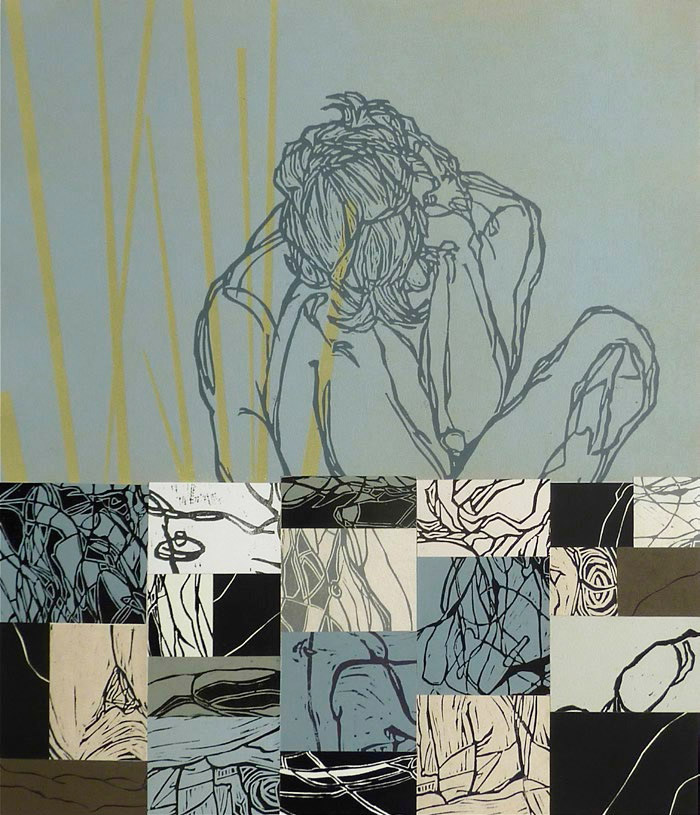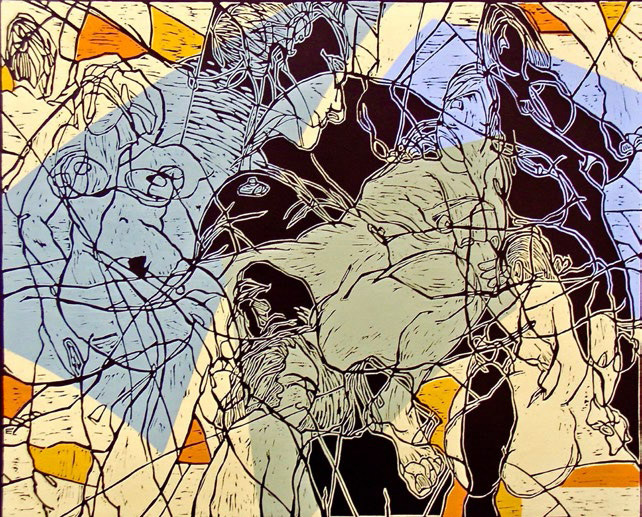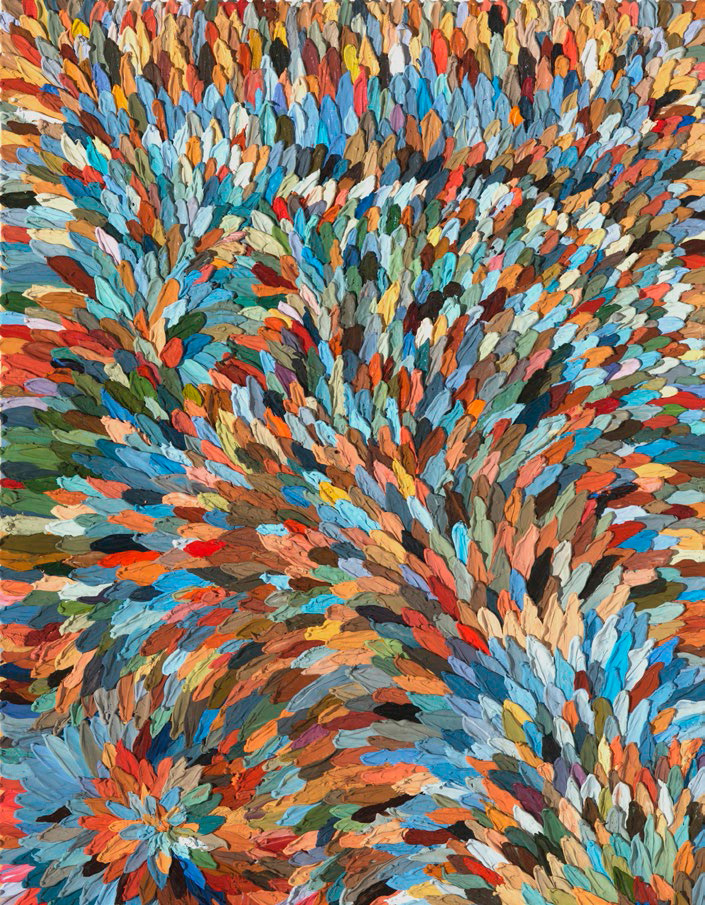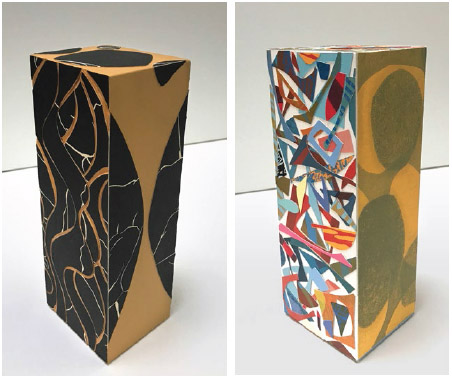Destiny’s Calling - Page 2
 |
|
|
|
|
 |
|
|
 |
|
|
 |
|
|
 |
|
|
People love the collages and they have given his career a boost.
"They just grab me. They're fascinating to look at. I think they are masterful," says Margaret Murray, a San Francisco lawyer who first saw Fernando's work at the retrospective at the Mexican Museum. Yes, at only 54 he's had a retrospective.
Murray's got a four-by-four-foot canvas hanging in her living room. "I can just look at it all day long. It's just endlessly fascinating to me, the color, the shapes, the choices he made about where to place them," she says.
Like other of his fans, she digs the mid-century modern vibe.
"I'm almost 60," Murray says. "Visually, my childhood frame of reference is the '60s and '70s. Seeing those pieces just kind of threw me back. I told Fernando it reminded me of the Jetsons—the colors, the wacky shapes."
Jeff Haass, a San Franciscan who owns half a dozen of Fernando's figurative paintings and several smaller works, says, "I like the precision of his work, even his freeform figurative drawings. There's a lot of precision in his line. You don't see that in a lot of people."
"His abstracts," Haass says, "I can just look at them forever, trying to see all the pieces and how they fit together."
Riding the mid-century modern wave was never his intention, Fernando says. "I wanted to discover other things I could do," he says of the move to jazzy abstraction.
He does note that his collages suggest the work of Rex Ray, a San Francisco artist whose wildly colored, abstract, or floral mid-century modern-inspired canvasses, collages, and prints proved immensely popular. Ray died young, in 2015.
And Fernando notes that he grew up just as mid-century modernism was giving way to mod and hippie. "As a kid I noticed interesting colors and patterns. A lot of that stuff stayed with me," he says.
The collages were not Fernando's first move in the direction of abstraction. He has a series of paintings in which groups of nude human bodies tumble and fall through space, creating semi-abstract patterns.
Destiny may have played a role here too. Frugality certainly did. Fernando, who paints from the model, was filling sheet after sheet with his sketches.
"Paper tends to get expensive with one figure per sheet, so I decided to draw more than one figure on each sheet," he says. He began drawing one figure on top of another and noticed that, "as the figures overlap each other, I am creating these abstract forms as well. So I took that idea and began doing them as paintings."
"Abstraction began to play more of a major role in my work."
There was a risk in adopting a new mode of painting, Fernando says. He had a fan base of collectors for his figurative work and didn't want to lose them.
One such fan is Rosie Torres, a member of the Oakland School Board.
"My first painting by him is of a woman with her head down, sitting on the floor, her shoulders hunched over. It's very emotional. I'm a lawyer, I see a lot. That's how I feel sometimes. I'm sitting sometimes like that, thinking, with my back against the world."




